Giant jorts or short shorts? It’s this summer’s great menswear enigma. But while fashion writers are tumbling over each other to unravel it — not really, of course: they all know there’s no success like failure — the unsolvable riddles and unfathomable mysteries of summer 2026 are already in the making. For that’s how the cycle works: fashion is always already behind and ahead of itself. There’s no time for something to get old and yet nothing is ever really new.
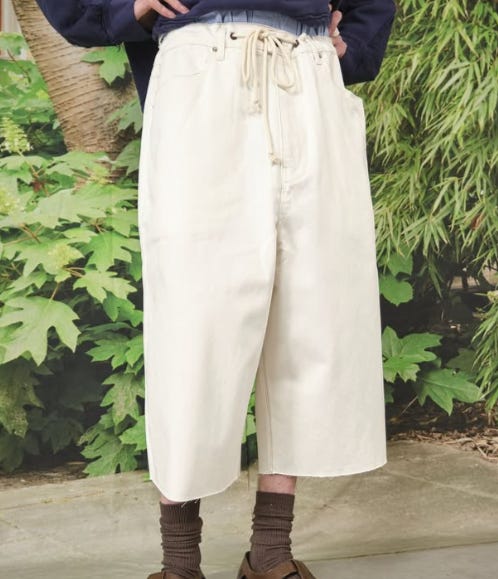



Fashion weeks — those series of biannual events where designers showcase their upcoming collections — are where these different chronologies overlap, like a miracle so mundane it passes for real life. You’ve got people dressed up in a combination of timeless clothes and last year’s pieces, contemplating which new summer items to buy, if any, and talking about the touch and feel of next year’s collections.
Until quite recently, in a world already totally unimaginable, Paris Fashion Week was largely devoid of writers, bloggers, influencers, and content creators. Not the official calendar of global luxury conglomerates and their runway shows, of course, but the other show in town: that of smaller, quieter brands and designers in their showrooms — often a synonym for a single square room on the first floor of a rickety appartment building at the far end of a passageway — spread across the central arrondissements of Paris. Many of these showrooms are by appointment only. Many of these appointments are reserved to store owners and buyers. And, in some cases, their appointment requests are kindly declined or met with silence.
“In the end,” one Paris Fashion Week veteran told me, “everyone’s here to make money.” That isn’t the whole truth, but it’s definitely not untrue. The off-calendar events, including showrooms, aren’t as spectacle-driven as the official big venue shows. (One or two badly lit racks of clothes are hardly an exception.) But they can be pretty mercantile too.
This perhaps is how a Husserlian would look at it: putting everything else between brackets, the pure experience that takes place here is one of designers and their assistants eagerly presenting samples of new collection pieces; of tags showing wholesale and retail prices; of the hope that the buyers will actually show up and, when they do, look carefully at the line sheet; of a fitting model or any other person trying on a few things; of some buyers purchasing a selection on the spot that they believe will align with the audience of their stores; and with other buyers holding off for one reason or another (“I usually take some time to digest everything,” “I’ve already spent my entire budget”).
Like fashion as a whole, individual buyers exist within different chronologies. They’re here right now to look at what’s new. And the very fact that they are is strong evidence of them taking an interest in a brand. But, like a historian turned on their head — or a futurologist with commercial interests — they’re also putting what’s new in long-term perspective, for instance assessing brands on their expected longevity and ability to endure in a changing market. All buyers, in other words, occupy their own specific position on a coordinate plane where the x-axis stands for consistency and the y-axis for newness.
This suggests why young designers so often find themselves in a catch-22 with buyers: in order to prove consistency, young designers need sales, but since most buyers prefer proven consistency, it’s very hard to get any sales from the get-go. The x- and y-axes analogy also suggests why the Neighbours and Maidens of this world are so important: they not just take a chance on newness, by investing in it they make sure it can eventually become more than that. That’s another way of saying that commerce and creativity, for better or for worse, exist side by side. And another way of saying this is: money itself isn’t the problem, having too much money without making it serve any genuine human needs is.
Looking at the Netherlands, Erik Bosman and Arij den Otter from Devastator, Viktor ter Hark from Afura, and Jeroen de Wal from Store Du Nord are playing their modestly pioneering roles as store owners/buyers promoting this nook of the fashion world. Jeroen is known for his honest, idiosyncratic, and — I quote — “zero fucks given” attitude, and word reached me that he’ll soon be stocking Evan Kinori, Man-tle and Cottle, next to favorites like Sunray Sportswear and Yoko Sakamoto. If anything, he seemed the one to talk to about the daily life of a sharp buyer. I wasn’t disappointed.
Netherlands is slightly at the periphery of the fashion world, and The Hague — where Store Du Nord opened its doors in 2019 — is at the periphery of fashion in the Netherlands. How do you experience this cultural-geographical reality on a day-to-day basis?
The Hague is a challenging retail city for sure. It is quite classy and traditional here, partly because it’s the political capital, and not as vibrant as Amsterdam or Rotterdam. There’s simply less happening and it tends to be a bit sleepy. On the other hand, people from The Hague are very loyal customers. Besides, the city is full of expats, international business people, and quality tourists. That’s really a game changer compared to many other cities. Store Du Nord is opposite the King’s working palace, Paleis Noordeinde — that makes the location extra special.
On your Substack page, you write quite candidly about your ongoing struggles with Store Du Nord. Or, as you put it, you’re documenting your “ongoing existential crisis as a fashion retailer.” What’s the crisis about, and why did you decide to share it with the world?
As I’m turning older, 42 now, I’ve started to ask myself a lot of questions about my world — the world I live in, the world we all live in. I’m constantly reflecting on whether and how my business can make a difference amidst all the crap we see happening on this planet, a planet which we are all too busy destroying. The page is simply a reflection on these thoughts.
What trigged me to write so openly has to do with the struggles I’m experiencing this year. Long story short: the big change I was hoping for has not happened. I’ve been going back and forth between negotiations with investors and feeling extremely stressed about and frustrated with the process. On the page I try to give insight into my world as an entrepreneur as I believe that, in one way or another, many others will recognize similar challenges in whatever they’re doing in their daily life. And for me it’s also a way of clearing my mind by writing it down and posting it online. I don’t care too much about what people think of it — they may find that I’m overreacting or they may resonate deeply with it. Either way, take it as you like.


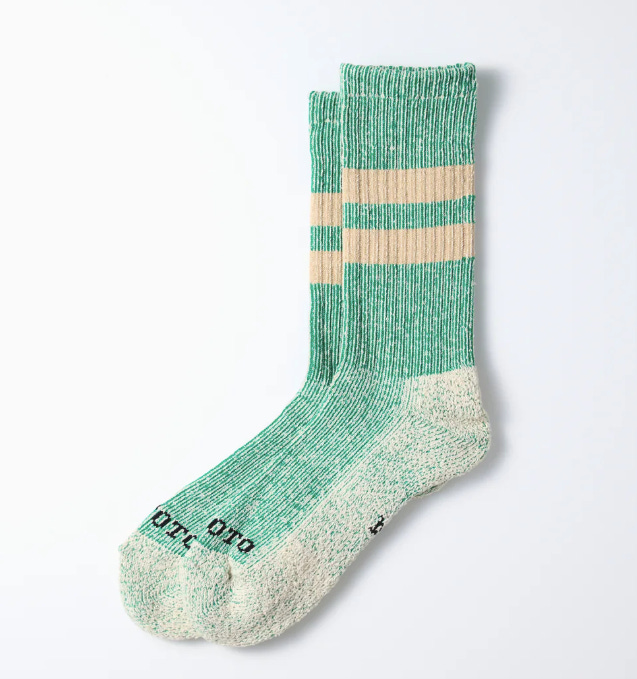

To me it seems you’re also doing the Substack by way of critique of the industry. Would you agree?
In all honesty, I just try to shed a light on the real world. The amount of bullshit has grown to ridiculous levels. I absolutely appreciate the dedication towards specific makers, designers, fabrics and so on. I'm 100% part of that group. But I do feel that we’re elevating people and garments to a level that makes zero sense. At the end of the day what we do is about garments intended to be worn. And it's about human beings making them. They’re not different from you or me. The only thing is that they’ve invested 10,000 hours of their life to excel at what they do best — just like me in retail, just like you in writing, just like so many in this world, whatever their profession.
I believe that if we appreciate and communicate about “niche” fashion in a less gatekeeping manner, it’s possible to introduce it to people outside of this small world. If we keep it to ourselves, who’s going to keep it going?
What do you take “niche” to mean anyway?
I think that in the current menswear landscape, or fashion as a whole, too many people use the word niche. Myself included. For me personally, it helps to explain certain makers or collections to customers, as they’ll quickly understand it’s special. However, I prefer to use words like “forgotten craftsmanship,” or “old world tailoring,” etc. to emphasize that it’s more than just niche. It’s a way of making clothes you just don’t find so much or that easily nowadays.
You’re Store Du Nord’s store owner and buyer. Does that ever give rise to internal conflicts, the former prioritizing consistency and the latter newness, for instance?
The internal conflict is actually not so big as you might think. I’ve come to notice that the items that sell best are the ones that I personally truly like. I used to buy more “commercial” items, especially in the first two years or so, but I didn’t enjoy them all that much. What happened was that these items actually didn’t sell well, and the very interesting and exciting pieces sold out way faster than expected.
What’s your current approach as a buyer?
My buying is built around two blocks: a niche core, and a basics core. I’d say the balance is about 40% niche, 60% basics. I usually take about 6-12 months researching brands to see if they can be a good fit, purely based on how they communicate and work. Then, if the garments also meet the same level, it’s time to take the next step.
On the niche side, I try to find exciting pieces and interesting makers, and curate a solid offering that sets the tone for the store — brands such as MotivMfg., Evan Kinori, and Man-tle. On the basics side — which has a horrible sound to it — it’s all about wardrobe staples. Here I go deeper in the sizes and stock as these are usually items that many people enjoy wearing and would like more than one of in their wardrobe — think brands like Sunray Sportswear, Hansen Garments, Barbour and Japanese denim. This occupies most of the space in my relatively small store.
Over the years I’ve come to add more and more niche makers to the brand list. I’m soon starting partnerships with Cottle and Calmlence for 2026, for instance — both not easy to find and with a serious price tag. Such choices are mainly due to my strong desire to source, curate, and preserve true craftsmanship, and help the underlying qualities and values survive. It’s also what Store Du Nord has become known for.
Since 2019 you’ve experimented quite a bit with the way in which Store Du Nord operates. I know you don’t like e-commerce and at one point even decided to make it impossible for customers to buy directly online. Does that make life as a fashion retailer just much harder or also more worthwhile?
I’ve no bigger love/hate relationship than with the online world. When you look at the niche brands I work with, the time and energy put into it — from cultivating a fiber to the finished cloth and then making a garment — and the efforts put into curating the pieces, all this is so extremely difficult to communicate properly online. And with online consuming there’s a huge gap between wanting and understanding. It's something I really struggle with, because I don't have the kind of interaction with an online consumer as I would have in the physical store.
During Covid I got so fed up with the entire world just randomly ordering stuff, and just as easily returning it, that I wanted to make it more difficult. I decided to rebuild my webshop, keeping all the products and information but taking out the “add to cart” option. I replaced it with a button that said “request invoice.” That extra step gave me the opportunity to connect a bit more with online consumers. At the same time, the consumer had to think first if he/she really, really wanted to request an invoice and buy the item. This worked very well and also minimized returns. However it was also very time-consuming, for instance because all products were updated manually.
After three years I had to convert it back to a regular webshop. It did sort some effect, however, because many of my regular customers got used to contacting me before ordering and even new customers now often opt to ask for sizing or fabric details before placing an order.
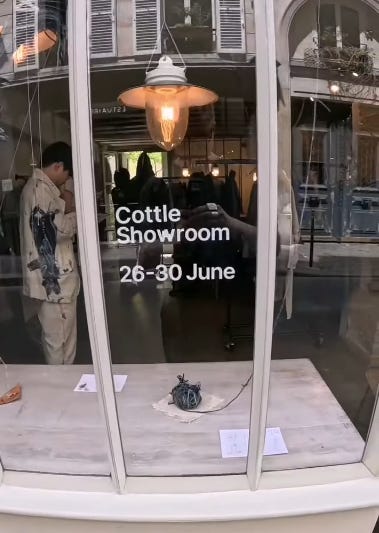





In addition to store owner and buyer, you’re also Store Du Nord’s only employee. What’s it like for you to work solo in the store at least 50 hours per week?
From the start I knew Store Du Nord wouldn’t attract hundred or even fifty people per day. I was, and still am, fine with that. It’s my ambition to inform, to educate those who are genuinely interested. That requires peace and quiet in the store, as well as a lot of focus and patience on my part. And yes, it can also be a bit lonesome at times. On such occasions, it be nice to talk to someone else than myself, someone to share wild and creative, or practical and business-related, ideas with.
And I can imagine that not every visitor of the store belongs to the group of menswear enthusiasts?
Definitely not! I’ve a fairly large base of frequently returning customers, mostly expats and international businessmen. Apart from them, at least 20-30 women enter the store every single week. They immediately leave as soon as they sense that I only do menswear. (Which isn’t true, by the way: I always have some womenswear and unisex pieces on offer.) And many of the local Dutch customers look at the price tags first, amazed by or simply refusing to understand why the pieces cost what they cost. That can be tiresome, for sure.
You’re the only store in the Netherlands that stocks Evan Kinori and Man-tle. Could you give me a sense of how that came about?
I’ve been following Evan Kinori since his very first newsletter (still in my inbox). From the start I loved everything he stands for — the designs, the fabrics, the ethos. If there’d ever be a Garden of Eden in the realm of designers, Evan is in it and that’s my paradise. Aside from this groupie-worship, it took me quite a while before I built Store Du Nord to the level needed for it to be an option for Evan Kinori.
Somewhere in 2022-23 I started reaching out to them to ask if I could visit their Paris showroom. I never got a reply so it probably got lost in spam, or I just didn’t fit the bill. Then, early June of 2024 I finally got an invite. I was super excited, like a little kid going to Disneyland. We met in Paris that summer, and I was amazed by his calm, easygoing attitude, the overall vibe — and the collection, of course. So our partnership started with the SS25 collection.
At the end of our meet-up, Evan introduced me to Larz and Aida from Man-tle. I was equally impressed with their work, especially in terms of fabric innovation and research. I asked them if we could meet again in January of this year, which we did, and upcoming autumn will see the first drop of Man-tle in store.




I notice that conversations about stores usually focus on new names and collections, and less about discontinued partnerships, for instance. Likewise you rarely, if ever, read about designers that decide to stop or brands that seize to exist. Have you ever felt disappointed in a brand?
I still very much like Nigel Cabourn, and I’ve stocked their premium ‘Made in Japan’ series for many years. But I eventually felt it was time for something new and more special, like Man-tle.
The work that the people at Yoko Sakamoto do is great, the fabrics are amazing and last year I went to Tokyo to meet Yoko Sakamoto herself — out of respect but also to engage deeper with the brand. Unfortunately, we recently had some different views on the positioning of the brand. My gut feeling (which I always follow) was that it’s turning from a “niche” brand into a brand that’s focused on capital gains. For me it means that after AW25 I’ll discontinue Yoko Sakamoto at Store Du Nord.
Finally, I saw that you’re doing made to order workwear now. What’s the idea behind it, and how does it work?
Yes, indeed. So, I’ve been working with a “rugged workwear tailor” since 2020. It’s my dear friend Fernando Garcia De La Calera, a tailor from Spain who’s been doing very interesting work the past 10 years. During Covid we were able to help each other out. He had to close his boutique in Madrid in that period and I had a lack of stock as sales skyrocketed that first summer. We then introduced a made to order program with his styles at the time, and after that period we continued working together and made limited edition collaborations with renowned artists such as Casper Faassen and Jamel Armand.
The past year we’ve been working on a new made to order program, which is now available in store. We developed a labor jacket, inspired by the timeless blue de travail, and a 1950s engineer chino using an original version from the 50s, which Fernando took apart and made a new pattern out of. It’s for all genders and sizes run from XS to XXL. You can choose from a multitude of fabrics and fabric weights, and size adjustments are included in the price. We use plant fiber fabrics woven in Spain, in linen, hemp or cotton (or a blend of those). So basically people come in, find their style and size, pick a fabric and it’s made for you within four weeks.
For me it’s a way to offer wardrobe staples with customization options without having to continuously buy stock from brands. The initial investment was high, but because it’s a pre-paid order system, it will eventually be more efficient and reduce unnecessary work and/or overproduction. What’s not to like?
Thanks for reading. Please consider subscribing and/or upgrading to help Present Forever grow and flourish. Your support is much appreciated.




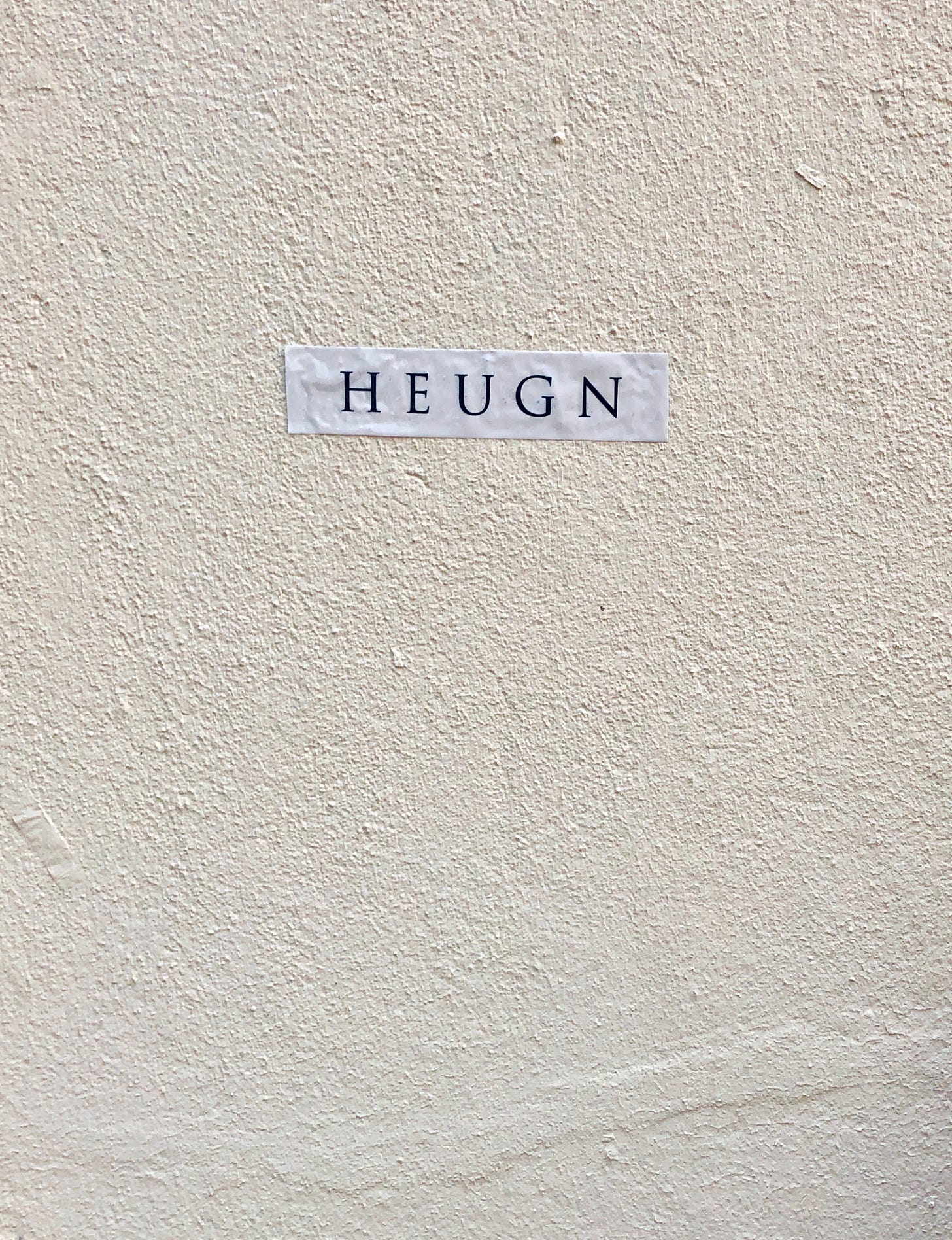

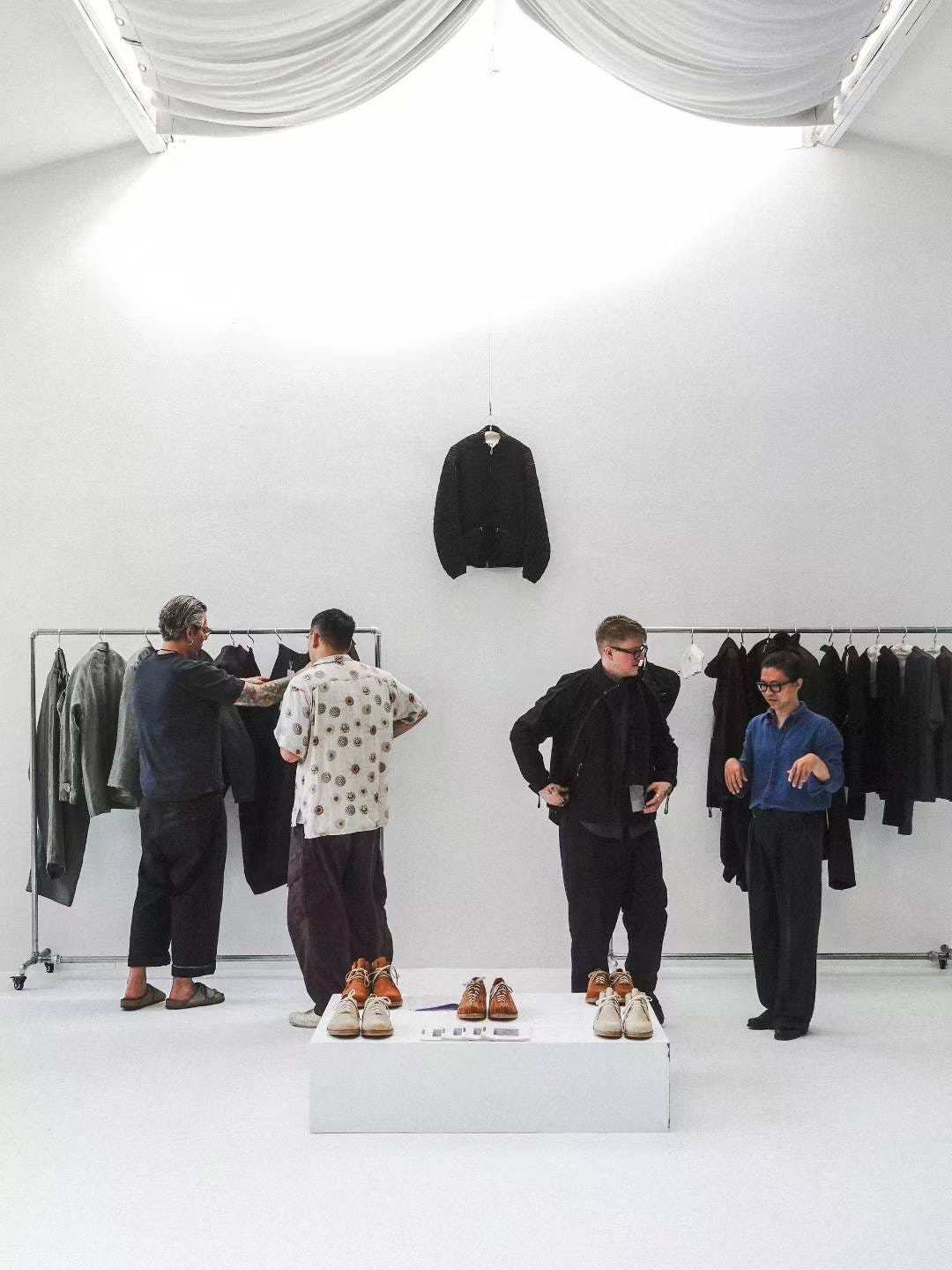
Loved reading about the “request invoice” experiment. We’ve grappled with similar questions around how to foster a more intentional buying experience. The way something is purchased should reflect how it was made... with care, not impulse. That’s why we’ve phased out returns and cancellations, and why our most intricate timepiece is only available privately through a waitlist.